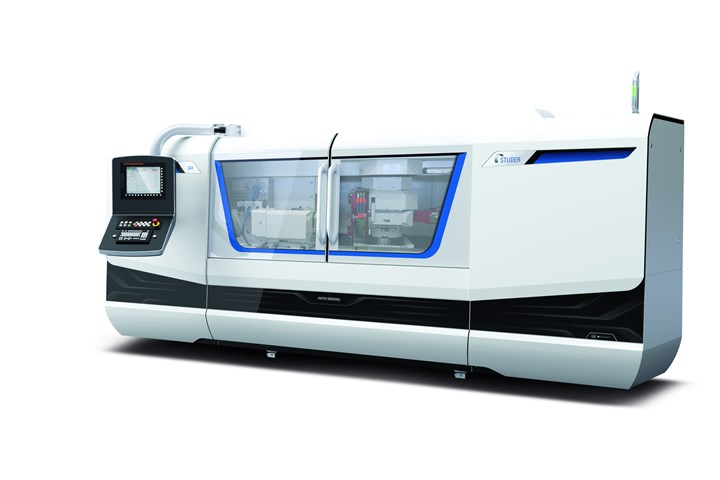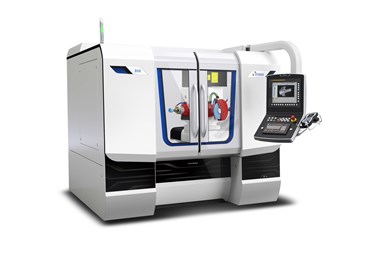Cylindrical Grinding Machines Offer High Precision and Accuracy
United Grindings’ Studer S41 and S131R cylindrical grinding machines are well suited for manufacturing dies and general grinding applications respectively.

United Grinding Studer S41 machine.Photo Credit: United Grinding
United Grinding offers two cylindrical grinding machines, the Studer S41 (universal) and the Studer S131R (radius internal).
For complete machining of large workpieces, the Studer S41 offers advanced technology well suited for manufacturing dies, where tungsten carbide and ceramic part materials dominate production. The machine allows shops to generate diameters, cones and transitional radii with polished surface quality through B and X/Z axis interpolation.
The Studer S41 is also said to incorporate a direct-drive turret wheelhead with speed-controlled C-axis featuring measuring systems on the drive motor and workhead spindle, a direct-drive turret wheelhead with integrated B axis, 0.00005º resolution and the ability to accept a large number of universal, tandem, diagonal and internal-grinding wheelheads. The wheelhead swivels automatically and accepts up to four grinding wheels to machine workpieces completely in single clampings.
Further, configurable as a single-purpose machine for large-batch production, the Studer S41 features distances between centers of 39.4"-63" (1000-1600 mm) and center heights of 8.9"-10.8" (225-275 mm) to accommodate the majority of daily grinding tasks. Maximum workpiece weight is 550 lbs (250 kg).

Studer S131R. Photo Credit: United Grinding
The Studer S131R is said to excel in general grinding applications and the production of complex workpieces made from hard materials, along with hydraulic components such as axial pump pistons, guide plates and housings from hardened steel, cast iron and copper. The machine also handles single-clamping production of complex workpieces with tapers between 20º and 90º.
The machine's fully automatic, completely sealed, simultaneously swiveling direct-drive B axis is said to offer superior thermal stability, mechanical rigidity and interpolation from -60º to +91º, while the workhead C-axis enables form and thread grinding. High-precision axis drives with linear motors add speed and accuracy, and a -50˚ to +280˚ swiveling spindle
turret with up to four grinding spindles enhances grinding flexibility. Temperature-stabilized components define precision while a Granitan S103 mineral casting machine bed provides thorough vibration damping.
With a swing diameter of 11.8" (300 mm) above the table, 13.780" (350 mm) X-axis/cross slide travel and 15.748" (400 mm) Z-axis/longitudinal slide travel, the S131 can machine external diameters up to 6.3" (160.02 mm) with an external grinding wheel 9.8" (248.92 mm) in diameter. The S131R accommodates parts up to 11.8" (299.72 mm) long and up to 220 lbs.
(99 kg), including clamping device.
On both machines, StuderSIM software enables operators to machine complex parts, often in a single clamping. StuderSIM derives workpiece geometry from a drawing, completely defining and generating all the data required for grinding cycles. Furthermore, operators can simulate
grinding to easily check and visualize the processes on a PC or on the machine itself.
Both machines include include high-precision axis drives with linear motors, Granitan machine beds for high levels of damping, thermal stability and guidance accuracy, and the StuderGuide guideway and linear drive system for high wear resistance and long working life.
Related Content
-
It Starts With the Part: A Plastic Part Checklist Ensures Good Mold Design
All successful mold build projects start with examining the part to be molded to ensure it is moldable and will meet the customers' production objectives.
-
Machining Center Spindles: What You Need to Know
Why and how to research spindle technology before purchasing a machining center.
-
Maintaining a Wire EDM Machine
To achieve the ultimate capability and level of productivity from your wire EDM on a consistent, repeatable and reliable basis, regular maintenance is a required task.














